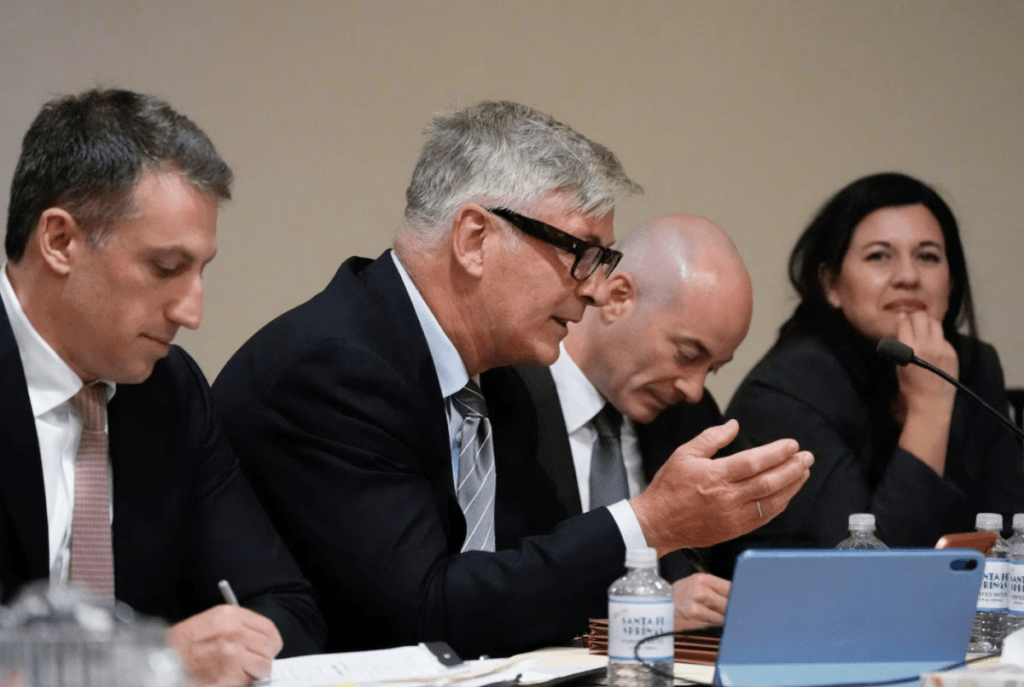In a surprising turn of events, the legal case against actor Alec Baldwin has been dismissed by a judge, bringing an unexpected end to a highly publicized legal battle. This decision, which has sent shockwaves through both the legal community and Hollywood, raises numerous questions about the proceedings and the implications for Baldwin and the parties involved.

Background of the Case
Alec Baldwin, a prominent actor known for his work in film and television, found himself at the center of a legal storm following an incident that sparked widespread media coverage. The case stemmed from an on-set shooting during the filming of the movie "Rust," where a prop gun held by Baldwin discharged, resulting in the tragic death of cinematographer Halyna Hutchins and injuring director Joel Souza.
The incident led to a series of legal actions, including criminal charges against Baldwin for involuntary manslaughter. The prosecution argued that Baldwin had a duty to ensure the safety of the firearms used on set and that his negligence led to the fatal incident. Baldwin, on the other hand, maintained that he was unaware the gun was loaded with live ammunition and that he was following instructions given to him.
The Courtroom Battle
The courtroom proceedings were closely followed by the media, with each development scrutinized by legal experts and the public alike. The prosecution presented evidence aiming to establish Baldwin's responsibility for the mishap, including testimonies from crew members and safety experts. They argued that Baldwin's failure to follow safety protocols directly contributed to the accident.
The defense countered by highlighting the systemic failures on the set of "Rust" and the lack of proper safety measures that should have been enforced by the production team. Baldwin's legal team emphasized that the actor relied on the assurances of the film's armorer and assistant director, who declared the gun "cold," meaning it was safe to use.

The Judge's Decision
The turning point in the case came when the judge reviewed the evidence and the arguments presented by both sides. In a detailed ruling, the judge dismissed the case against Baldwin, citing insufficient evidence to prove criminal negligence beyond a reasonable doubt. The judge acknowledged the tragedy of Hutchins' death but stated that the burden of proof required for a criminal conviction had not been met.
The judge's decision was grounded in several key factors:
-
Chain of Command: The ruling emphasized that Baldwin, as an actor, was not primarily responsible for the safety of the prop guns. The responsibility lay with the film's armorer and other crew members who handled the firearms.
-
Lack of Intent: The judge noted that there was no evidence to suggest that Baldwin intentionally mishandled the weapon or acted with recklessness. The shooting was deemed an accident without criminal intent.
-
Procedural Failures: The decision highlighted the broader failures in safety procedures on the set of "Rust," which contributed to the incident. The judge pointed out that systemic issues needed to be addressed to prevent such tragedies in the future.
Reactions and Implications
The dismissal of the case against Baldwin has elicited a range of reactions. Baldwin expressed relief and reiterated his condolences to Hutchins' family. He emphasized his commitment to improving safety standards in the film industry to prevent similar accidents.
Legal experts have weighed in on the ruling, with some praising the judge's adherence to the principles of criminal justice, while others questioned whether the decision sets a precedent that might allow high-profile individuals to escape accountability.
The ruling also sparked discussions about safety protocols in the entertainment industry. Industry insiders have called for stricter regulations and better training for handling firearms on set. The tragedy has prompted a reevaluation of safety standards and has led to initiatives aimed at preventing future accidents.

The Road Ahead
While the dismissal marks the end of Baldwin's legal battle in this case, the incident's aftermath continues to unfold. Civil lawsuits filed by Hutchins' family and injured parties are still pending, and Baldwin may face further legal challenges in those proceedings.
Additionally, the broader implications of the case have ignited a push for reforms in Hollywood. Advocacy groups and industry professionals are working towards establishing more robust safety measures, including mandatory safety briefings, enhanced training for crew members, and stricter oversight of prop weapons.
The "Rust" incident has left an indelible mark on the film industry, serving as a somber reminder of the importance of safety in filmmaking. It has also highlighted the complex legal and ethical questions that arise when accidents occur on set.

Conclusion
The dismissal of the case against Alec Baldwin marks a significant moment in the ongoing narrative surrounding the "Rust" incident. The judge's decision underscores the challenges of proving criminal negligence in complex situations and emphasizes the need for comprehensive safety measures in the film industry. As the legal and industry landscapes continue to evolve, the tragedy of Halyna Hutchins' death remains a catalyst for change, driving efforts to ensure that such incidents are prevented in the future.


You must be logged in to post a comment.